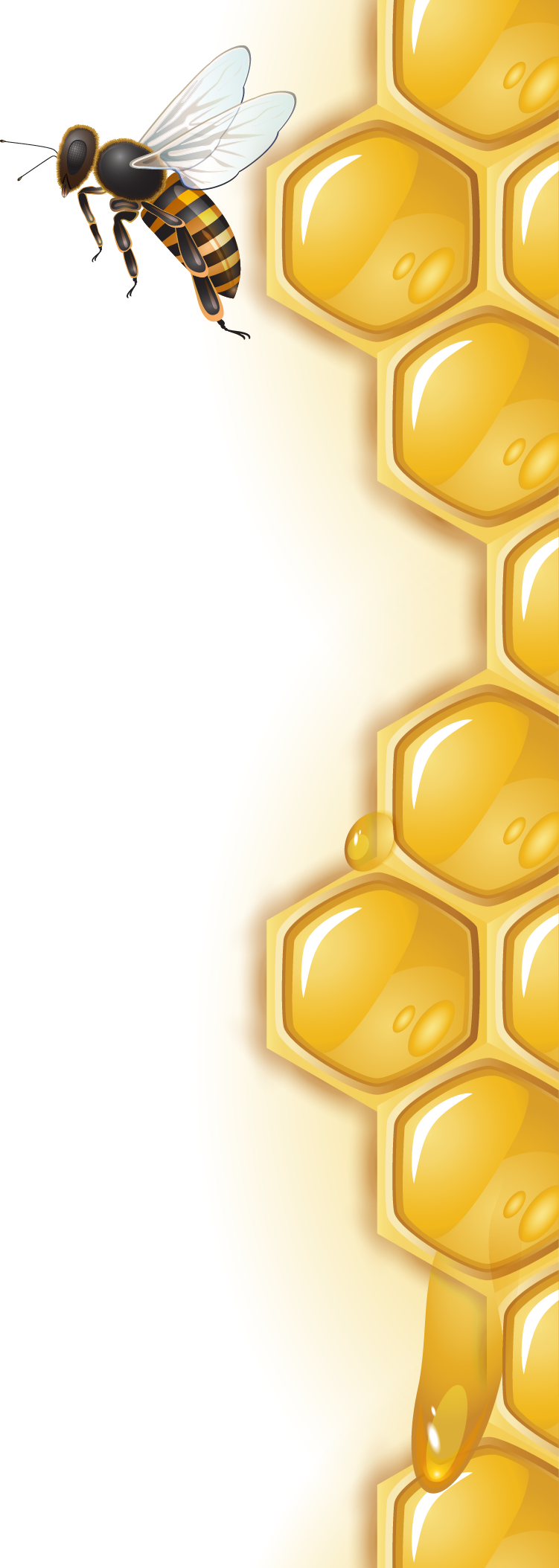
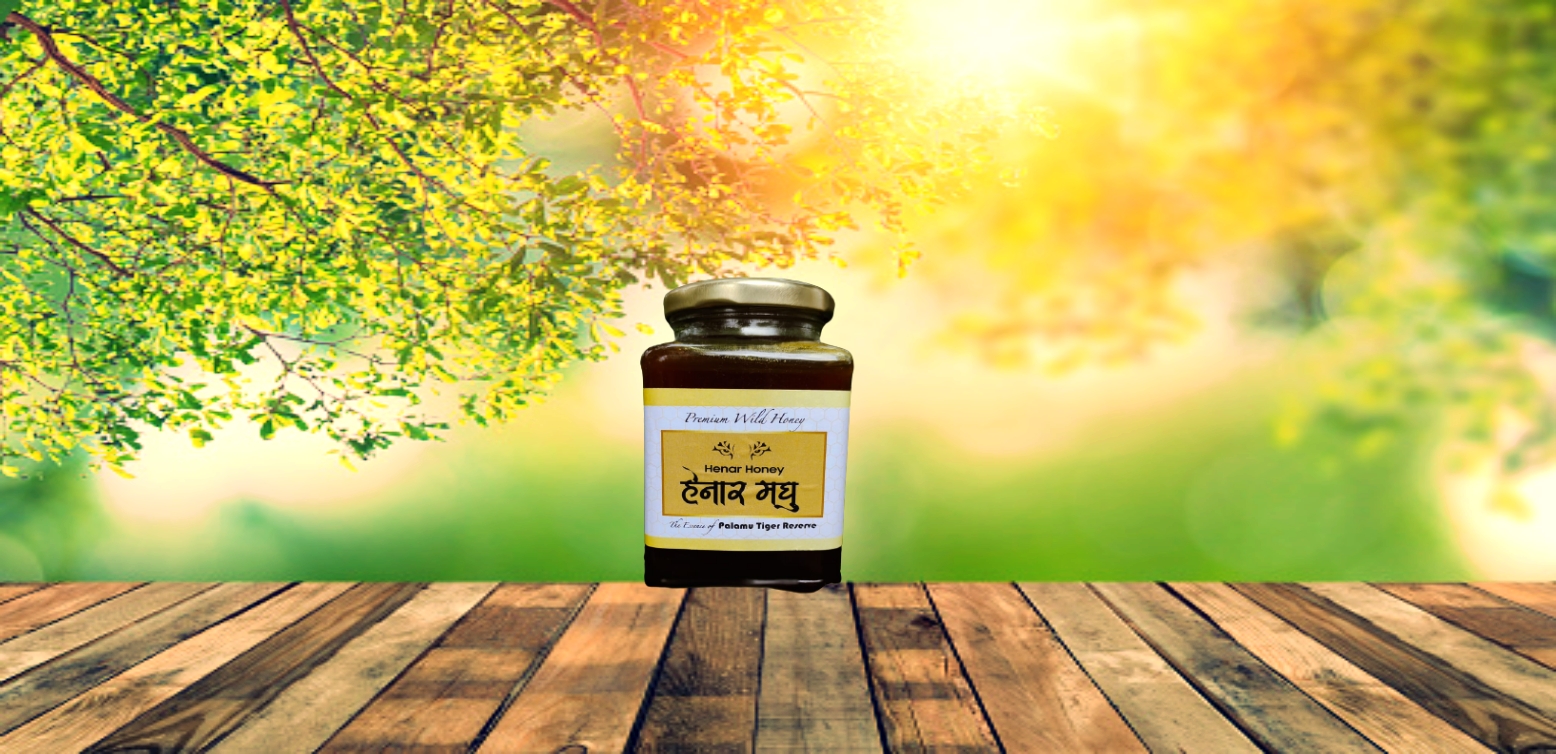
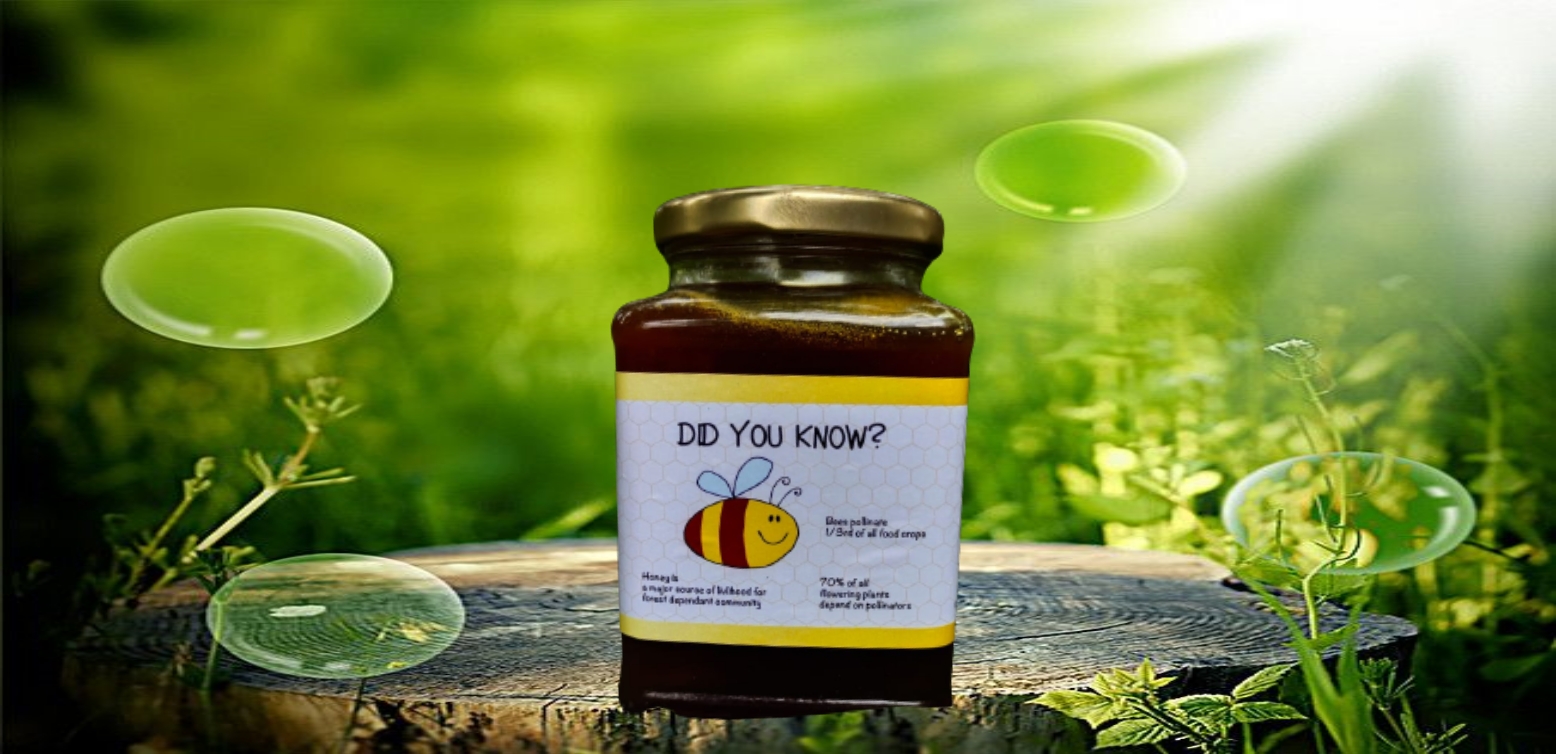
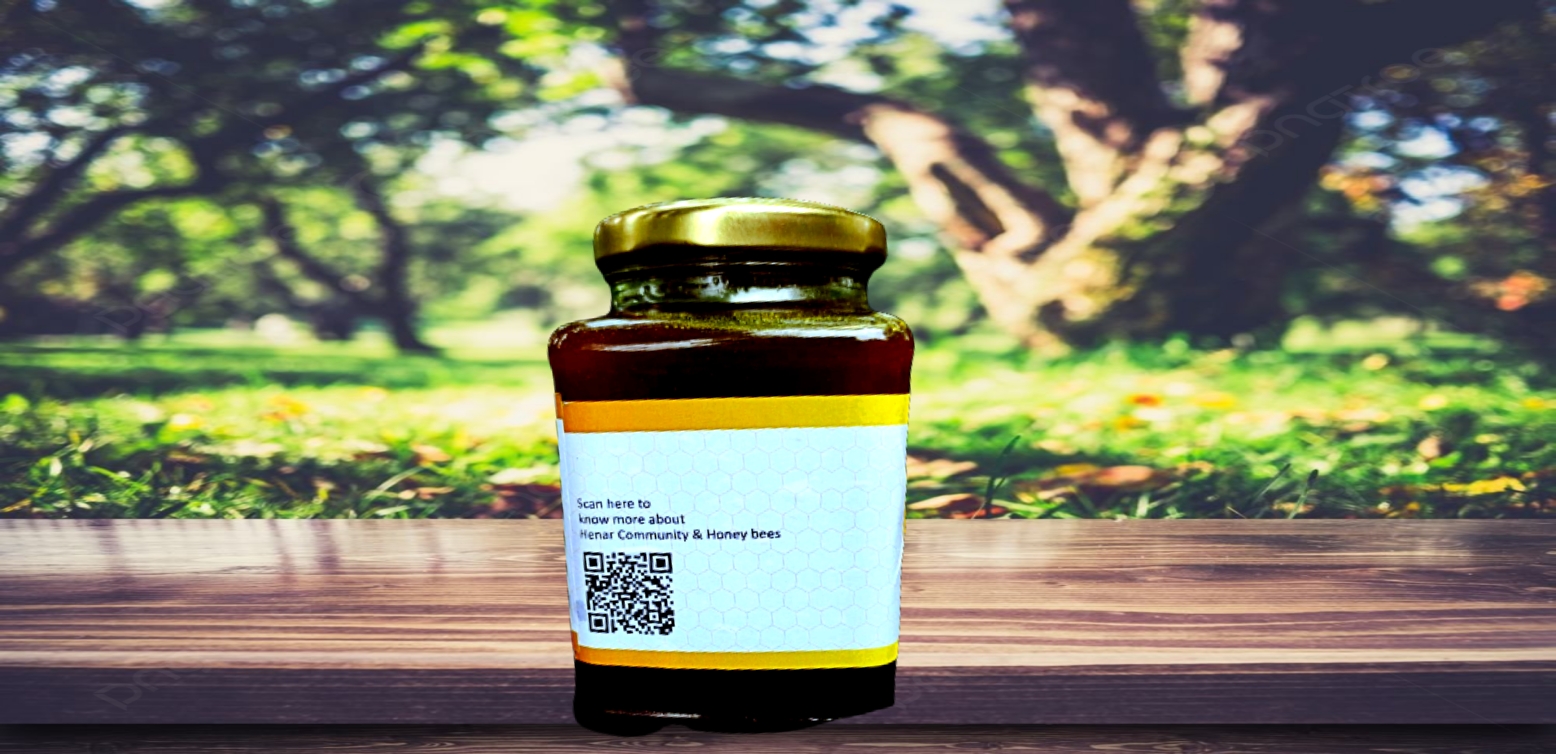
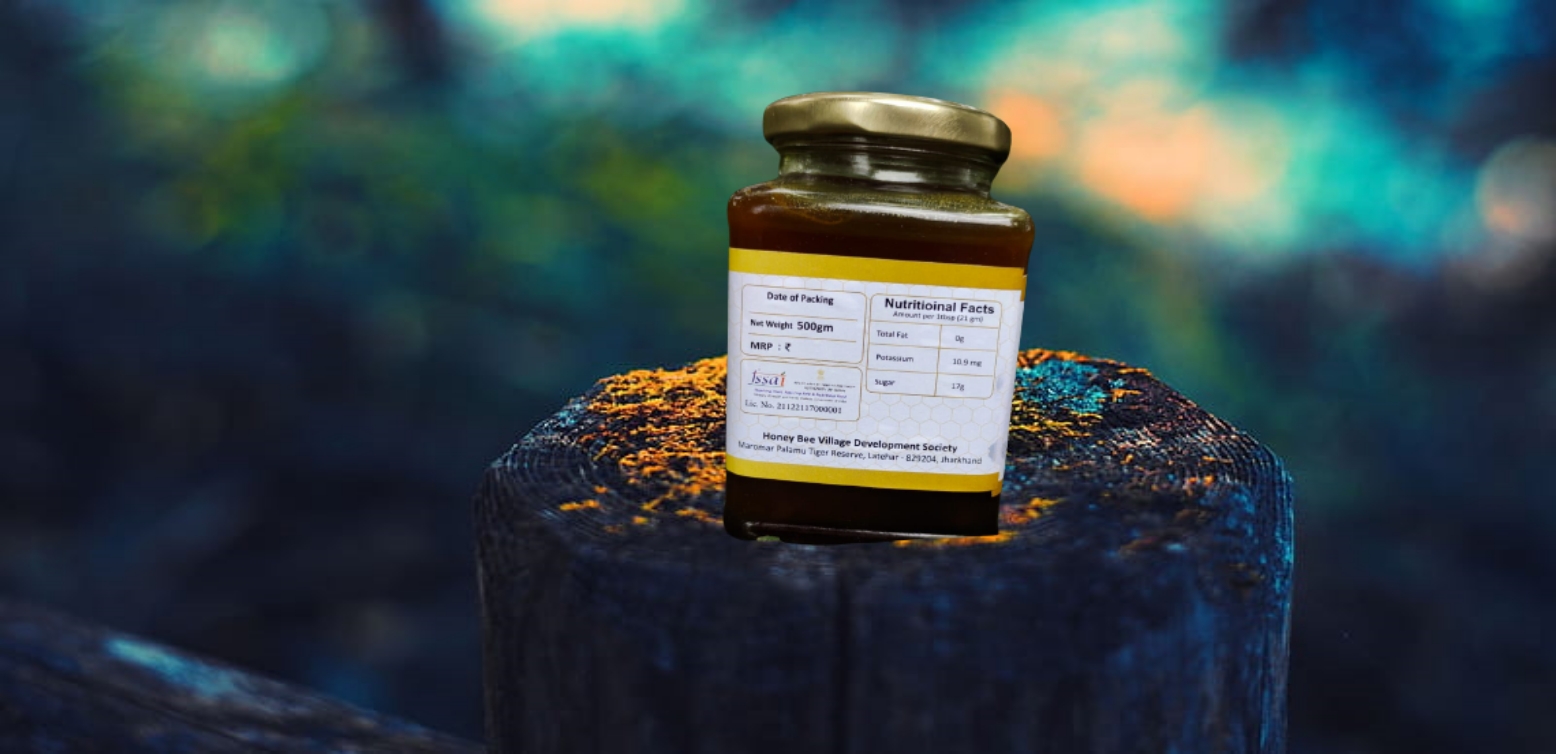
Henar Honey
How to extract the honey ?
मधु संग्रहण का काम मुख्या तौर पैर आदिम जनजाति पहरिया और किसान समुदाय के लोगों के द्वारा किया जाता है | ये विद्या उन्हें अपने पूर्वजों से प्राप्त होती है तथा बैशाख एवं ज्येष्ठ
माह के अमावस्या अवधि में मधु संग्रहण किया जाता है | इसका कारण है कि उस अवधि में हर प्रकार के पेड़ पौधे में परागण अपने महत्तम स्तर पर होता है | मधु संग्रह क पेड़:
| १. सेमल : | 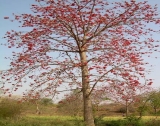 |
| २. साल : |  |
| ३. करम : |  |
| ४. करंज : | 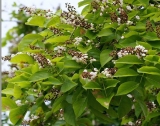 |
| ५.जामुन : | 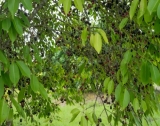 |
| ६. पीपल : | 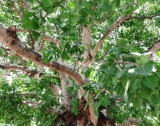 |
विधि:
५ से ६ लोग समूह बनाकर दिन में मधु के घर कि तलाश एवं घर तक पहुंचाने क लिए (बांस ,रस्सी ) का इंजाम करते है एवं मधु उतारने का काम रात को किया जाता है |रात्रि के समय बांस के सहारे छत्ते तक पहुंचते है तथा किसी खर पतवार (वन तुलसी ,बरियार ,पुटुस ) को जलाकर उसका धुआँ देकर मधु के छत्ते को सावधानी पूर्वक उतारते है |
The work of honey collection is mainly done by the people of primitive tribe Paharia and farmers community.They get this knowledge and skill from their forefathers. Honey is collected during the new moon period of the month of Baisakh and Jyestha. The reason for this is that during that period pollination is at its maximum level in every type of tree plant. Honey collection trees are:
| Semal: (Bombax massambicense) |  |
| saal :(shorea robusta) |  |
| Karam: (Adina cardifolia) |  |
| Karanj : (Pongamia glabra) |  |
| Jamun: |  |
| peepal: (Ficus religiosa) |  |
Type of wild honey bees in India
- The rock bee, Apis dorsata (Apidae).
- The Indian hive bee, Apis cerana indica (Apidae).
- The little bee, Apis florea (Apidae).
- The European or Italian bee, Apis mellifera (Apidae).
- Dammer bee or stingless bee, Melipona irridipennis (Meliporida
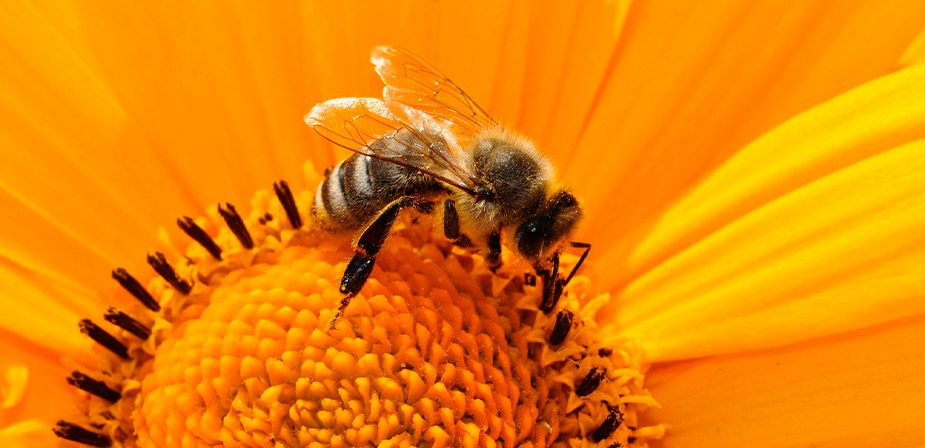
A glimps into the social structure of honey bees

Honey bees are extraordinary creatures. Like humans, they live in groups, enjoy each other’s company, and work together to achieve common goals. Unlike humans, they are eusocial. This means the individual bee is part of a caste, or type, of bee: either the “worker” or non-reproductive caste, or the “royal” or reproductive caste. Bees in the worker caste perform the different jobs necessary for the proper function of the hive and survival of the brood (eggs and larvae).
The honey making cycle
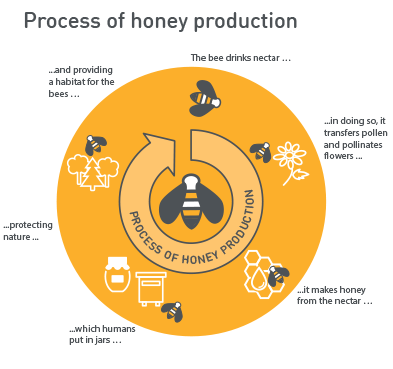
STEP-1
Honey starts as flower nectar collected by bees, which gets broken down into simple sugars stored inside the honeycomb. The design of the honeycomb and constant fanning of the bees' wings causes evaporation, creating sweet liquid honey. Honey's color and flavor vary based on the nectar collected by the bees.
STEP-2
On average, a hive will produce about 55 pounds of surplus honey each year. Beekeepers harvest it by collecting the honeycomb frames and scraping off the wax cap that bees make to seal off honey in each cell. Once the caps are removed, the frames are placed in an extractor, a centrifuge that spins the frames, forcing honey out of the comb.
STEP-3
After the honey is extracted, it’s strained to remove any remaining wax and other particles. Some beekeepers and bottlers might heat the honey to make this process easier, but that doesn't alter the liquid's natural composition.
Importance of honey bees in the ecosystem
It takes more than soil, water, and sunshine to make the world green. At least 30% of the world’s crops and 90% of all plants require cross-pollination to spread and thrive.
Let’s explore five of the reasons bees are important to the environment.
Pollination
To germinate, these plants require the transfer of pollen from the male part of the flower (the anther) to the female part (the stigma). As bees move from flower to flower in search of nectar, they leave behind grains of pollen on the sticky surface, allowing plants to grow and produce food.
Wild Plant Growth
It’s not just farm-grown fruits and vegetables that rely on pollinators to thrive. Many species of wild plants depend on insect pollinators as well. Bees are responsible for the production of many seeds, nuts, berries, and fruit, which serve as a vital food source for wild animals.
Food Source
Bees produce honey to feed their colonies during the cold winter months. Humans have harvested honey for thousands of years, but we aren’t the only ones who consider it a sweet snack. Critters like birds, racoons, opossums, and insects will raid beehives for a taste of nutritious honey (and bee larvae).
Wildlife Habitats
Bees are known for their elaborate hives, but they also help build homes for millions of other insects and animals. Their role as pollinators is vital in the growth of tropical forests, savannah woodlands, and temperate deciduous forests. Many tree species, like willows and poplars, couldn’t grow without pollinators like bees.
Biodiversity
As pollinators, bees play a part in every aspect of the ecosystem. They support the growth of trees, flowers, and other plants, which serve as food and shelter for creatures large and small. Bees contribute to complex, interconnected ecosystems that allow a diverse number of different species to co-exist.
Benefits of honey and other products from honeycomb
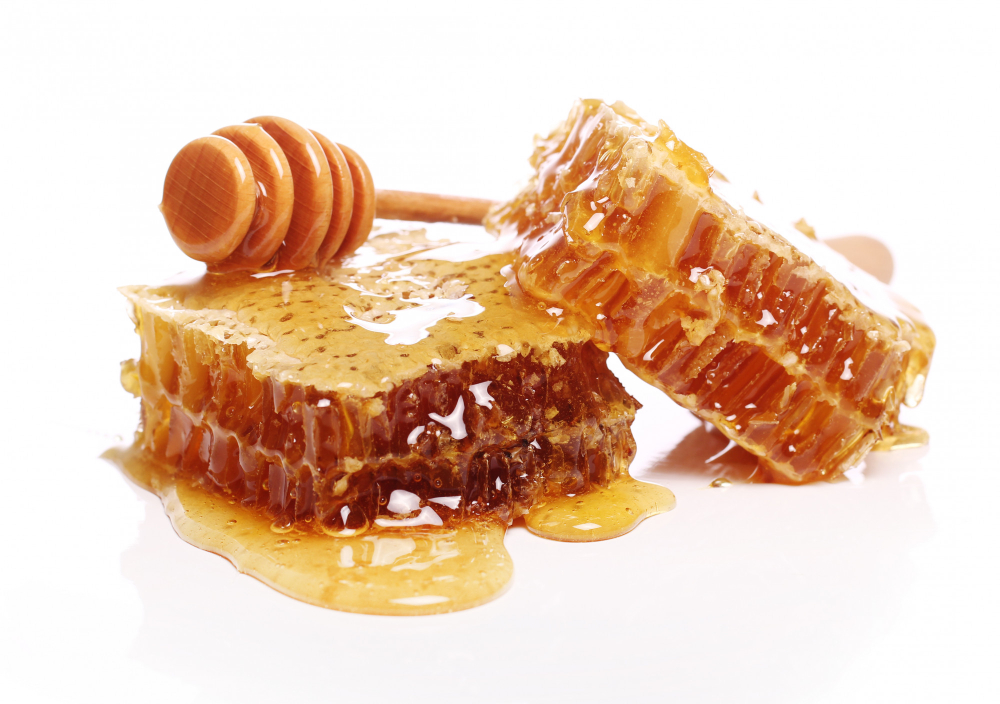
THE BENEFITS OF EATING HONEYCOMB
Some people may not know it, but honeycomb is edible. It’s simply honey in its rawest form. The honeycomb is made of beeswax, a completely natural product made by honeybees. It’s entirely safe to consume the raw honey in each cell as well as the waxy cells themselves. Eating the honeycomb even has added health benefits, such as reducing inflammation and improving heart and liver health. Learn more about the benefits of eating honeycomb.
IT HAS A GREAT TASTE AND TEXTURE
Raw honey in honeycomb is more flavorful than standard honey in the stores, and many people enjoy the bite of the honeycomb along with the sweetness of the raw honey inside. The honeycomb will vary in taste depending on the region it came from, but the texture is always chewy. Some people even compare it to a natural version of wax candy. You can either chew the beeswax and spit it out or swallow it to take in all nutrients. Either way, it’s digestible and safe.
IT’S AN EXCELLENT ALTERNATIVE TO SUGAR
For people with diabetes or anyone looking to reduce their sugar intake, honeycomb honey is a great alternative. Honey is sweeter than sugar, so you won’t have to use as much of it. Studies show that sugar—and, even worse, high-fructose corn syrup—raise your blood sugar levels far more than honey.
IT IMPROVES HEART HEALTH AND LIVER FUNCTION
Improved heart and liver health are some of the benefits of eating honeycomb. Honeycomb is rich in healthy carbohydrates and antioxidants, which can boost the immune system. The beeswax in honeycomb also contains long-chain fatty acids, which are good for the heart as well as for lowering bad cholesterol levels. In addition, beeswax contains natural alcohols with hepatoprotective qualities. That means they have the ability to prevent liver damage and improve liver function in people with fatty liver disease.
IT REDUCES INFLAMMATION AND FIGHTS ILLNESS
Honeycomb honey also improves inflammatory infections. It’s a natural anti-inflammatory that can heal chronic ulcers and wounds. Honeycomb may boost your body's ability to fight bacteria, fungi, and viruses, too. It has antimicrobial properties that can strengthen your immune system to fight off illnesses and infections.
Threats to honey bees
In 2007, honey bees began disappearing. Beekeepers across the United States reported that adult worker bees were leaving their nests, queens, larvae, and resources with no apparent cause. Large, industrial bee keepers suffered dramatic losses. Colony collapse disorder (CCD) brought public attention to the importance of pollinators, human impact on their health, and the consequences of their potential loss.
Multiple factors contribute to honey bee colony loss:
- Diseases
- Parasites
- Pesticides
- Long-distance transportation of colonies
- Winter survival rates
- Limited floral resources
- Fluctuations in the honey market
What we can do to save them
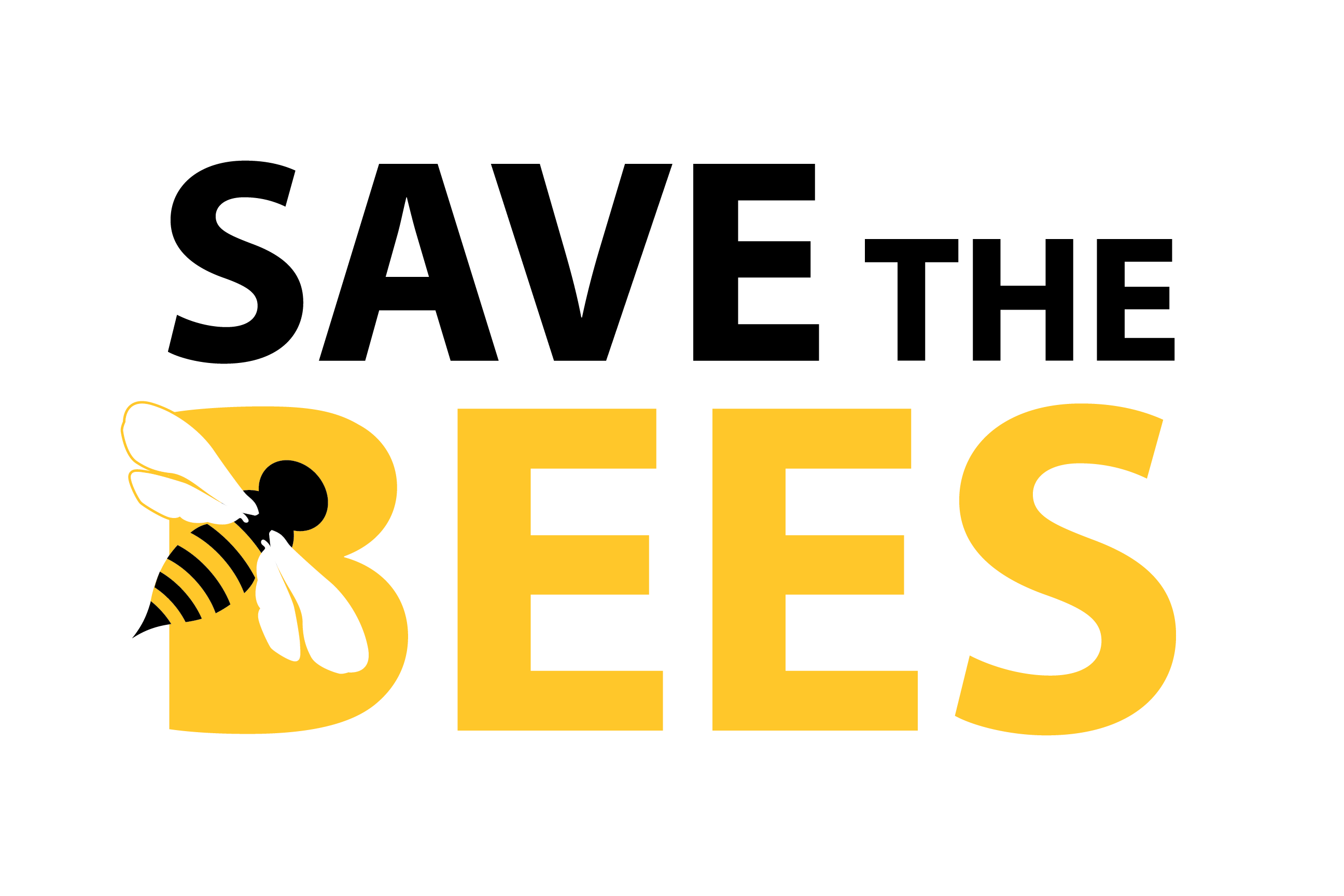
Build a pollinator garden with wildflowers Bees, butterflies, and other pollinators need nectar as their primary food source, and female bees collect pollen as food for their offspring. Native plants, which are adapted to local soils and climates, are the best sources of nectar and pollen. Most native plants are low-maintenance and don’t need irrigation or fertilizers.
Enhance nesting spots
Many bees nest in downed wood, hollow stems, brush piles, stone walls, and storage sheds. Ground-nesters like areas of loose, recently disturbed soil. To boost “renter” bee populations around your house, consider installing bamboo stalks, blocks of wood with drilled holes, or nesting straws.
Be cautious with pesticides
Consider reducing pesticide use or switching to organic herbicides, fungicides, and insecticides. Apply pesticides early or late in the day to avoid impacting bees when they are most actively foraging.
